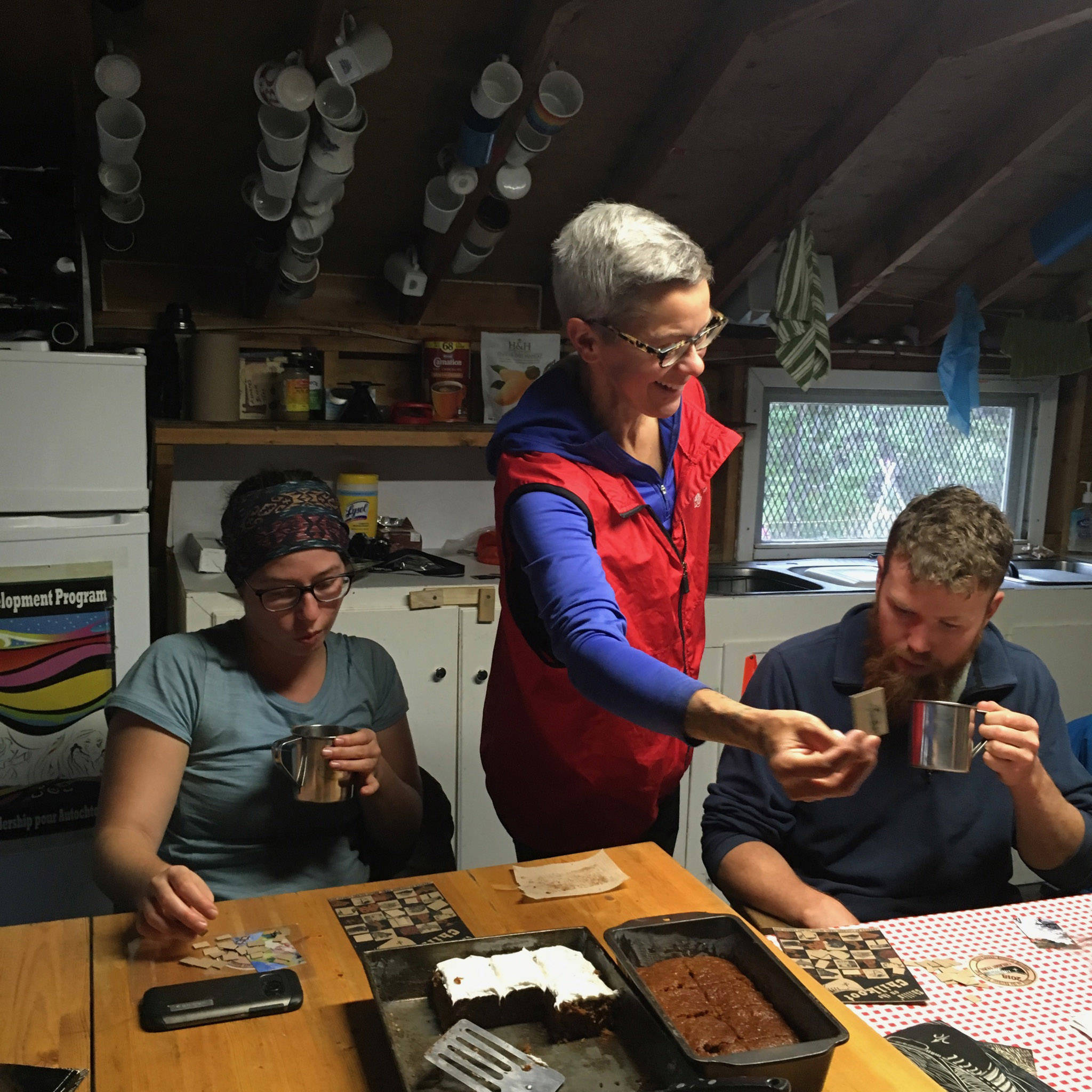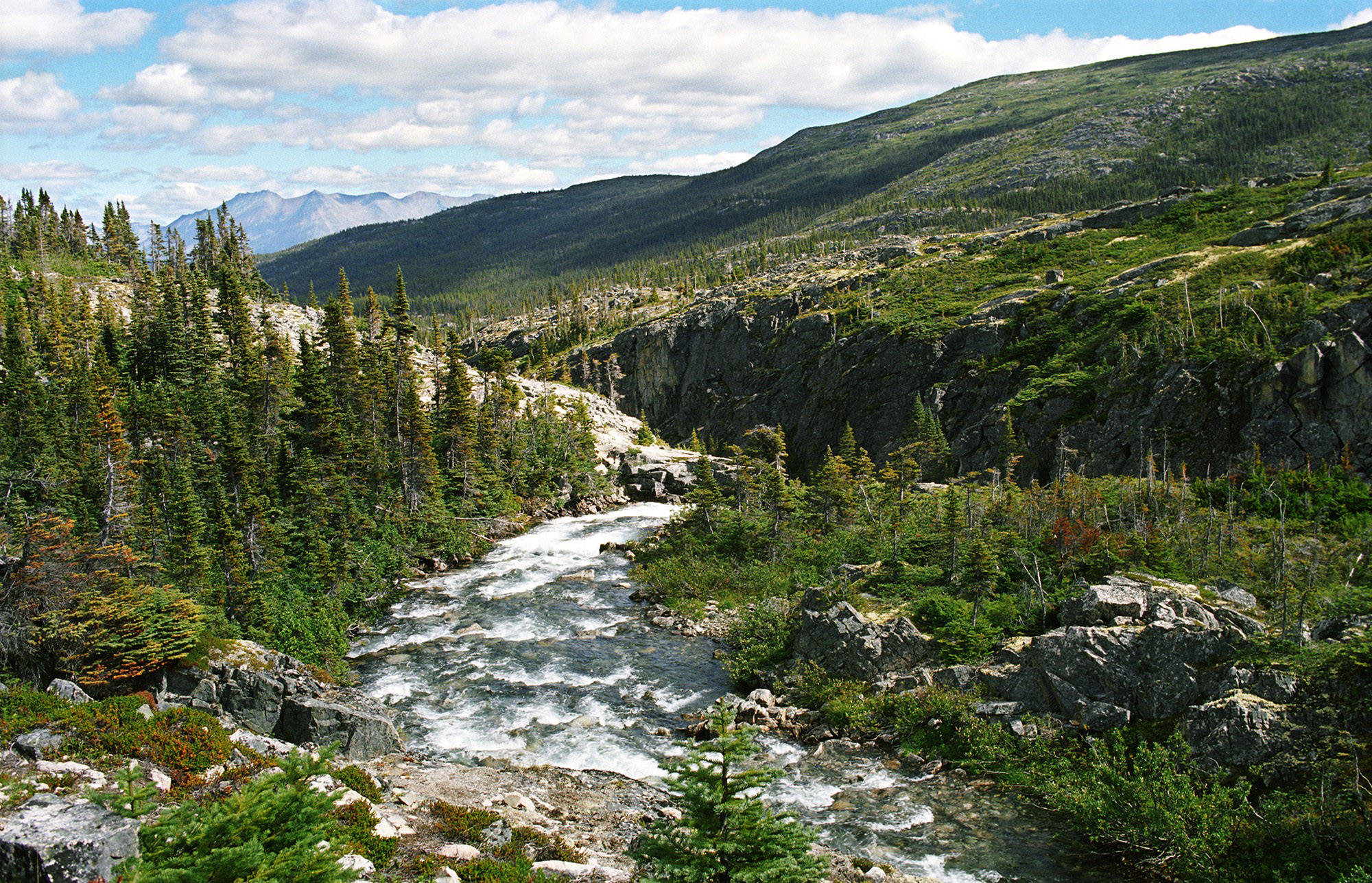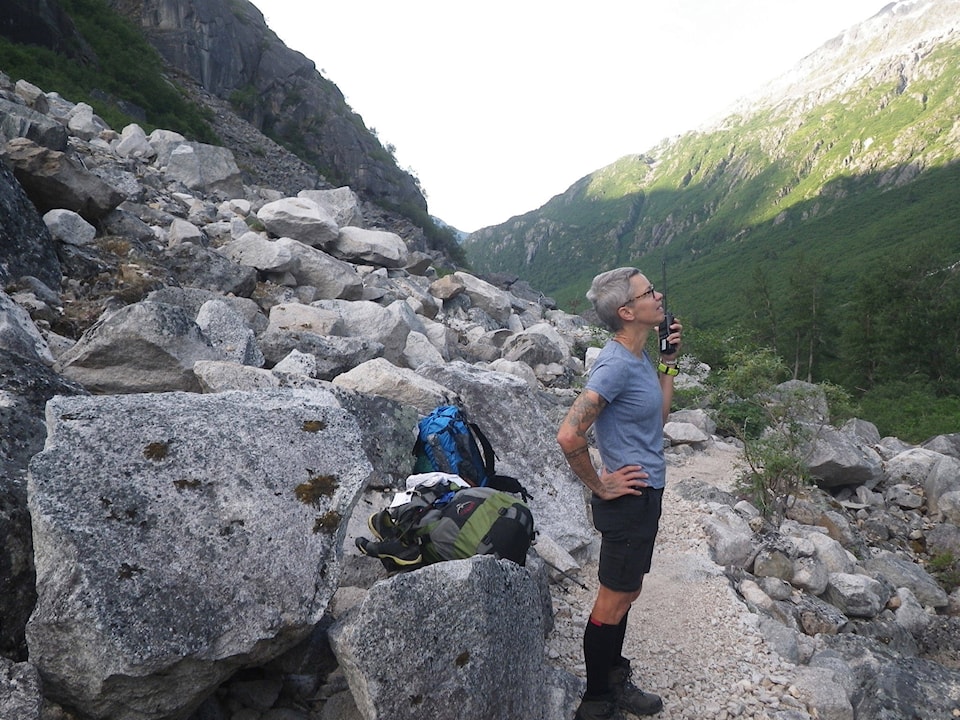For most residents of the north, the land is omnipresent. It can kill you. It’s big and beautiful. So it makes sense that the land is front-and-centre in a lot of the region’s art. But for the rest of the contemporary art world, landscapes are often an afterthought.
Mary Bradshaw, Director of Visual Arts for the Yukon Arts Centre wants to bridge the gap with the Chilkoot Trail Artist Residency.
“We can respond to the world around us and still be part of contemporary art,” she says.
Printmaking on Chilkoot Pass
Through the residency, artists can explore raw landscapes from Skagway, Alaska to Bennett, BC, embrace the unexpected and connect with their artistic practice and other hikers.
For the first time since the residency began in 2011, artists have the option of using Bennett Lake Camp as a home base. Artists with less camping experience can take the train (and all their art supplies) to Bennett and then use the cabin as a jumping-off point for shorter hikes in the area.
But Bradshaw hopes many artists still do the 53 km through-hike from Dyea, Alaska to Bennett, BC.
“Hiking from end-to-end lets artists experience the trail’s dramatic ecological changes.”
That sentiment was echoed by 2018 Chilkoot Trail artist-in-residence Hilary Lorenz.
“At every camp the wilderness changes radically. So I’m in the wilderness and then I’m in these huge open vistas and then I’m in desert. Every day brings a new experience and it also brings complete surprise.”
While the residency at Bennett Lake Camp will allow artists to bring more materials, doing the through-hike doesn’t necessarily mean you have to abandon your supplies.
“All artists get a food cache air-dropped along the trail, but Josh K. Winkler put mostly printmaking supplies in his cache, which meant he could host a workshop at the summit,” Bradshaw says.
“After cooking their dinners, hikers learned the relief carving and printing process in or around campsite shelters. These postcard-like prints allowed hikers to create visual reflections after all the thinking/walking hours they had built up on the trail,” Winkler says.
Depending on which option the artist chooses, time spent on the trail will be five to ten days.
For artists, the residency offers an opportunity to reconnect with their practice, share their work, and receive $3,000 to defray costs. For the community, it brings opportunities to engage and reflect, whether that’s printmaking on the trail or at artist talks in Skagway and Whitehorse.
The Yukon Arts Centre receives between 100 and 150 applications for the residency each year, Bradshaw says, “and we’re only able to choose three, which is heartbreaking.”
So how should you set yourself apart on your application?
Be sure to explain why time on the trail makes sense for your existing artistic practice, and give details of your plan to interact with hikers.
“The trail is a pretty social place, which might be surprising considering how remote it is.”
RELATED: Yukon art brought to light in new online permanent collection


